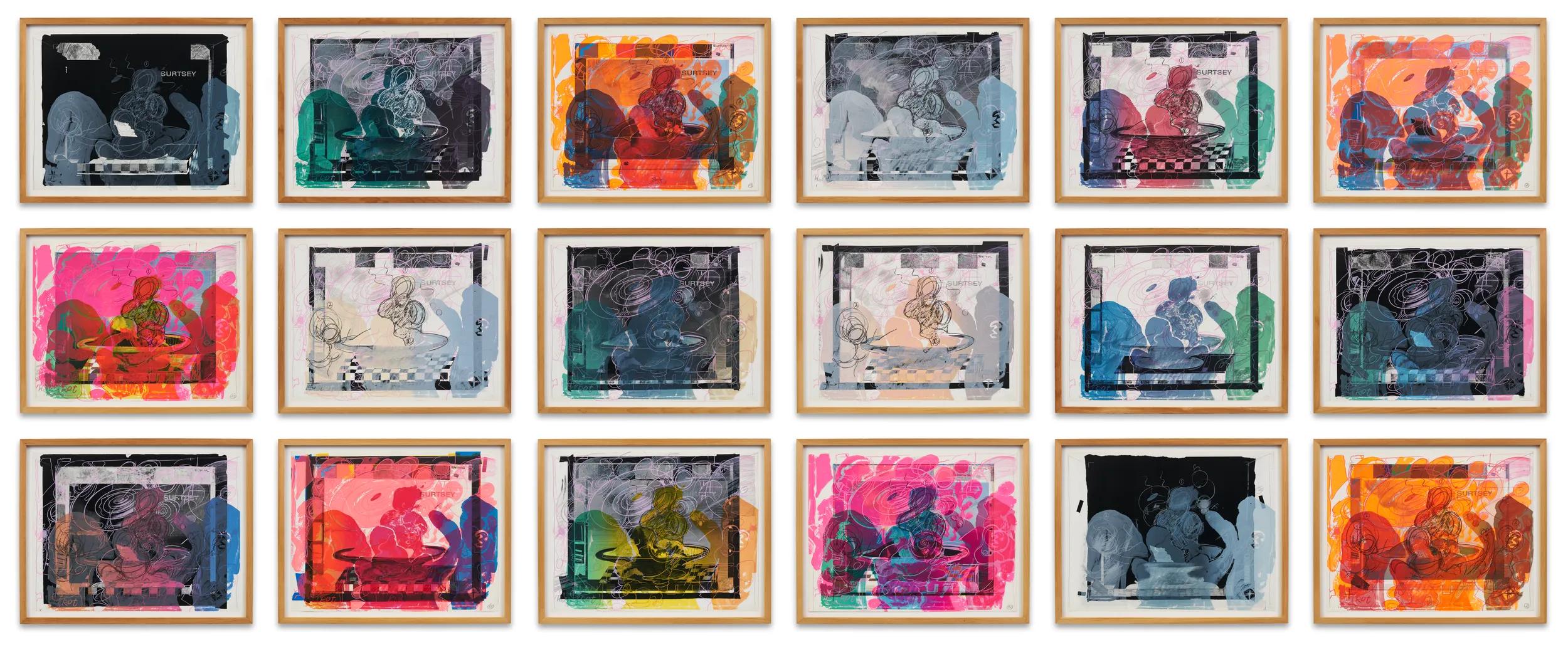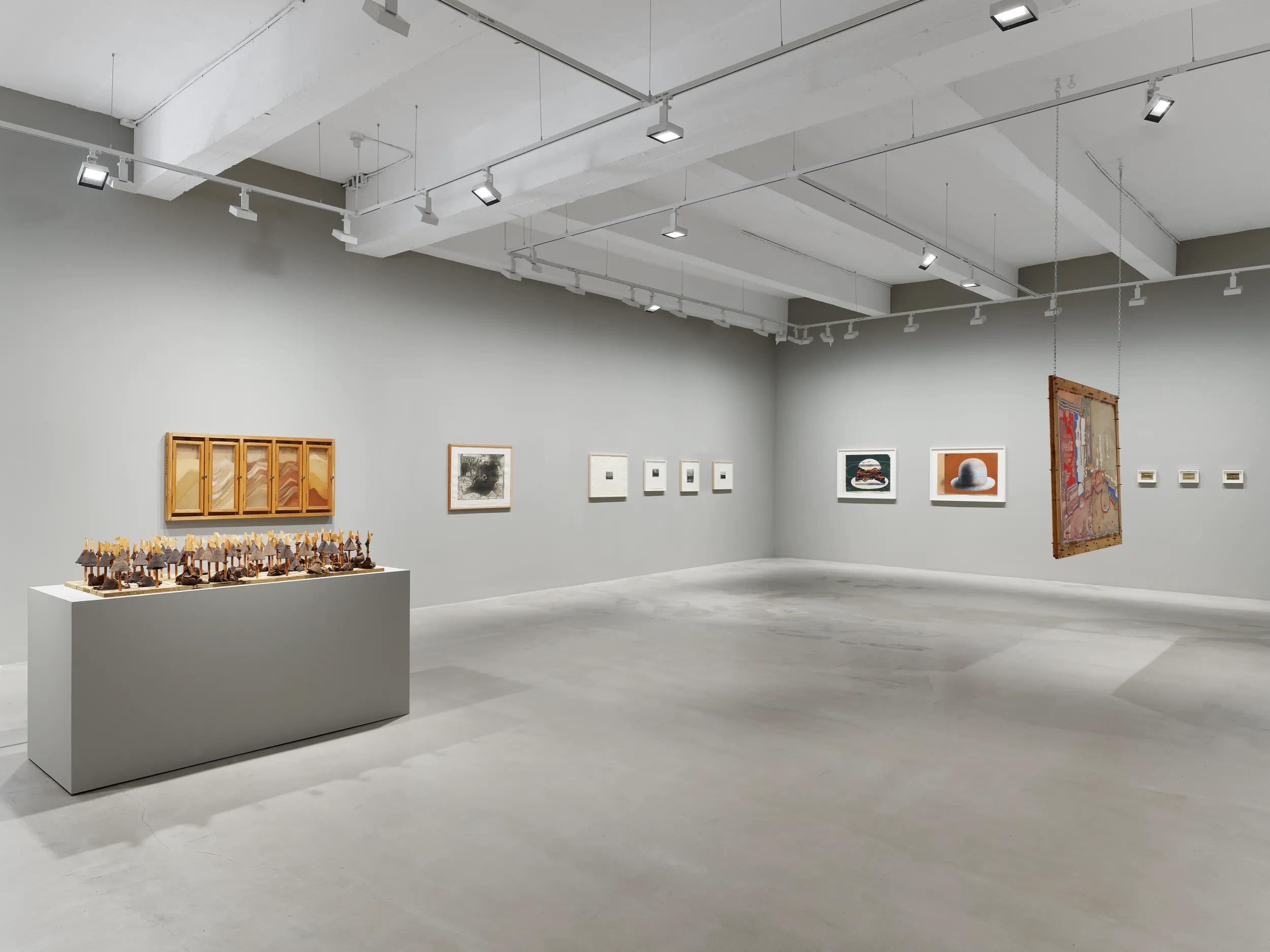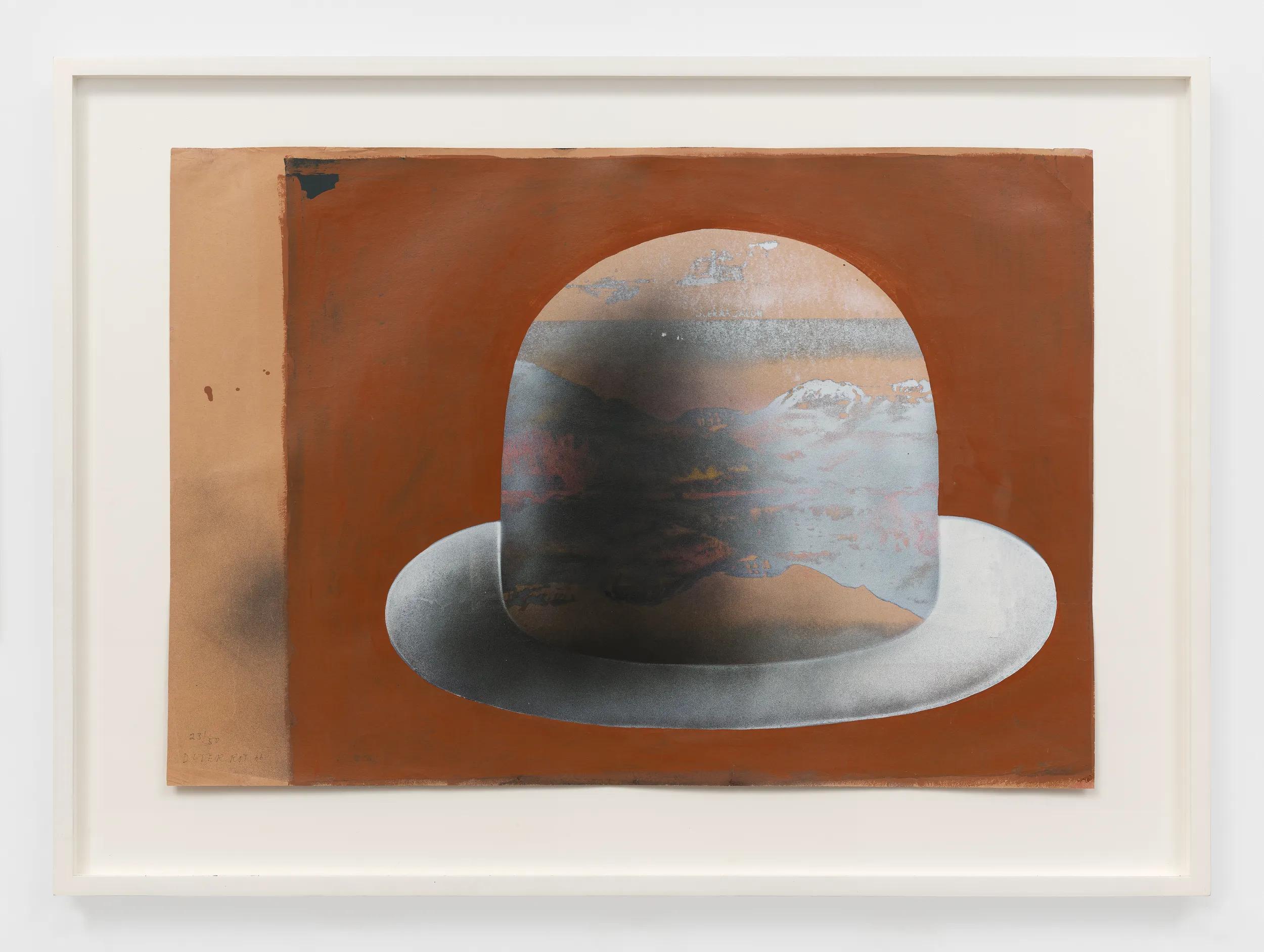
Renowned for his adventurous experimentation with both materials and subject matter, Dieter Roth (b. 1930 Hanover, Germany – d. 1998 Basel, Switzerland) generated a multifaceted oeuvre that transcends boundaries between painting, sculpture, design, literature, poetry and music. Featuring a selection of graphic works, monoprints, multiples and unique pieces spanning from the early 1960s to 1975, this exhibition, titled ‘Islandscapes,’ focuses on Roth’s printmaking, which accompanied every phase of his life and practice.
About the exhibition
Roth produced his first etchings on tin sheet metal at age 16 in St. Gallen, Switzerland. He would go on to master traditional printmaking techniques, including intaglio, woodcut, offset and screen-printing, via a roundabout education that included an apprenticeship to prominent Swiss graphic designer Friedrich Wüthrich, as well as lessons in lithography and typography with artist Eugen Jordi. Centering works in the landscape genre, ‘Islandscapes’ highlights Roth’s heterogeneous techniques, the radicality of his approach and the key aesthetic principles he explored through printmaking, such as repetition, doubling, symmetry and inversion. Never one to consider printmaking a minor art form, Roth tested the concept of reproducibility—not only with his prints but with his sculptures and installations—deconstructing the ideal of a fine artwork as a discrete and original aesthetic object.

Giant Double-Piccadilly (side 1)
1969–1973

Giant Double-Piccadilly (side 2)
1969–1973

SURTSEY - Dinner
1973-1993/2003

SURTSEY
1973/1974

The vast panoramas of Iceland, with its striking topographic contrasts, figure decisively in the works which comprise ‘Islandscapes,’ revealing the deep psychological impact of Roth’s move to Reykjavik in 1957, as well as his lifelong engagement with the island country thereafter. Popular images of Iceland co-opted from postcards (which Roth termed ‘Melancholic Knicknacks’) served as the starting point for several of the bodies of work in this exhibition. Some, shown here, are constructed from a basic act of assemblage. By cutting two copies of the same postcard along their horizontal axes, rotating one half 180 degrees, and taping either two top- or two bottom-halves together, Roth produced uncanny symmetries and inversions, simulating the effect of an island, city or skyline reflected in an undisturbed body of water.

Am Meer (By the sea)
1970-1974

In both ‘Surtsey’ (1973/1974) and ‘SURTSEY – Dinner’ (1973-1993/2003) Roth iterated on a clichéd photograph of the titular island, which was taken as it was being formed 30 kilometres off Iceland’s coastline by an undersea eruption. Roth’s conflation of two key motifs in these series—a volcanic phenomenon and a steaming serving platter—reflects his profound interest in dynamic and volatile substances, and in change as a necessary precondition for creativity in general. Like many of Roth’s artworks, the real island of Surtsey began to erode as soon as it came into view. Having emerged in 1963 in an explosion of fire and steam, it’s estimated that the island will vanish beneath the ocean’s surface by 2100.

As a lecturer in printmaking at the Rhode Island School of Design, Providence, in the mid-1960s, Roth famously began to implement perishable materials—including chocolate, cheese, butter, mayonnaise and yogurt— in conventional printmaking processes. The effects of time on Roth’s mutable materials are exceedingly visible in ‘Am Meer (By the sea)’ (1970–1974), a phalanx of 54 wood-and-paper flags planted in individual cones of molded sugar. Having reached various stages of disintegration, the sculptures resemble islands conquered by an anonymous empire that is fated, like all matter, for a fleeting existence.

Dieter Roth in My Life: Memories
This personal account from Sigríður Björnsdóttir—shared with the artist she describes as the love of her life—details her collaborative work with Dieter Roth, their encounters with friends and artistic peers and the beginnings of Roth’s multifaceted practice.
Related Content
About the Artist

Dieter Roth
One of the most influential artists of the post-World War II period, Dieter Roth was born in Hanover, Germany, in 1930, to a German mother and a Swiss father, and died in Basel, Switzerland in 1998. Dieter Roth was an artist of an immense diversity and breadth, producing books, graphics, drawings, paintings, sculptures, assemblages, installations, audio and media works involving slides, sound recordings, film and video. He also worked as a composer, poet, writer and musician. He often collaborated with other artists, subverting the principle of authorship. Those partners included such significant figures as Richard Hamilton, Emmett Williams, Arnulf Rainer, and Hermann Nitsch. But it was Roth's long and symbiotic collaboration with his son, artist Björn Roth, that stands as testament to the enormous and enduring potency of his restless, relentless process.
Through much of his life, Roth was restlessly peripatetic, moving between studios in many cities. His two primary bases of activity—Iceland and Basel—were decidedly outside the mainstream. Throughout his career, the artist continually circled back to earlier ideas and processes, reinterpreting and transforming works so that linearity and closure are consistently defied. Transience and order, destruction and creativity, playful humor and critical inquiry, the abject and the beautiful, all maintain a consistent balance throughout his work.
Roth represented Switzerland at the 1982 Venice Biennale, and received a number of awards and prizes, including the 1991 Genevan Prix Caran d'Ache Beaux Arts, a prestigious Swiss prize. In 2004, The Museum of Modern Art and P.S.1 Contemporary Art Center in New York City jointly presented the major historical exhibition ‘Roth Time: A Dieter Roth Retrospective,’ a project co-organized with Schaulager Basel, Switzerland, and the Museum Ludwig of Cologne, Germany.
Current Exhibitions
1 / 12


























